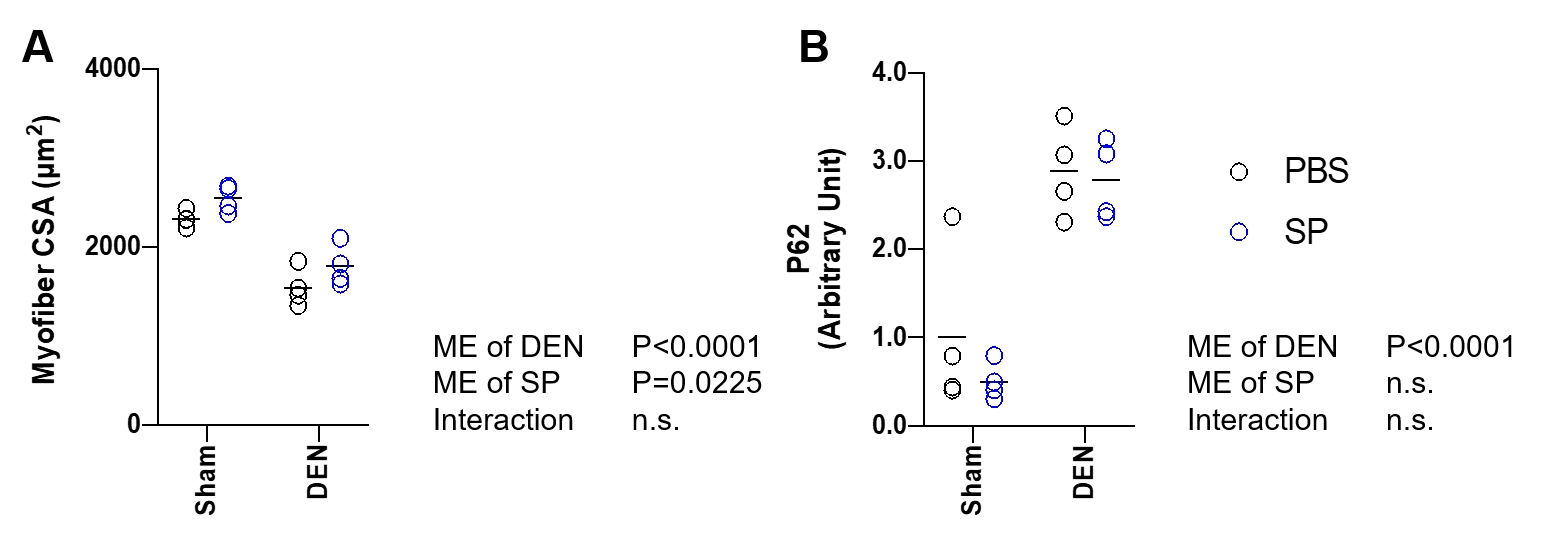Introduction
In modern society, skeletal muscle atrophy is a serious problem. It is well known that in many types of skeletal muscle atrophy, autophagy, which is a degradation mechanism, is reduced and waste products accumulate (Sakuma et al., 2016). Spermidine (SP) is a kind of polyamine that is abundantly contained in foods such as soybeans, and known as an autophagy inducer (Madeo et al., 2019). Previous studies showed that spermidine administration during exercise suppresses pharmacological skeletal muscle atrophy (Fan et al., 2017). However, it is unclear whether SP administration suppresses denervation-induced skeletal muscle atrophy.
Aims
The aims of this study was to investigate the effects of SP on denervation-induced skeletal muscle atrophy and autophagy-related proteins.
Methods
All the experimental procedures performed in this study were approved by the Institutional Animal Experiment Committee of the University of Tsukuba, Japan (22-397). Male Institute of cancer research mice aged 7 weeks were used in this study ( n = 4 ). After 1 week of acclimation, sciatic nerve transection-induced denervation (Den) was performed on the right leg of the mouse to induce skeletal muscle atrophy. A sham operation was performed on the left leg as a control. After the operation, spermidine 10 mg/kg BW was administered by intraperitoneal injection every other day. Tibialis anterior (TA) was collected two weeks after surgery. Two-way analysis of variance (ANOVA) was performed using the GraphPad Prism 8 (GraphPad, Inc.), and significance was set at P < 0.05 for all cases.
Results and discussion
We performed immunohistochemical staining of Laminin-α2 using frozen sections of TA. Significant main effects of Den and SP on muscle fiber size were identified (Fig. 1A). We evaluated protein expression levels by western blotting. Only a significant main effect of Den was identified on the protein expression related to autophagy (P62,LC3-â… ,LC3-â…¡) (Fig. 1B,2AB) and Protein synthesis (p-RPS6)(Fig. 2C). These data suggest that SP suppress denervation-induced skeletal muscle atrophy independent of autophagy pathway. SP has also been reported to relieve inflammation and oxidative stress, so further research is needed (Madeo et al., 2019).
Conclusion
SP suppressed denervation-induced skeletal muscle atrophy but did not affect key autophagy-related proteins.


